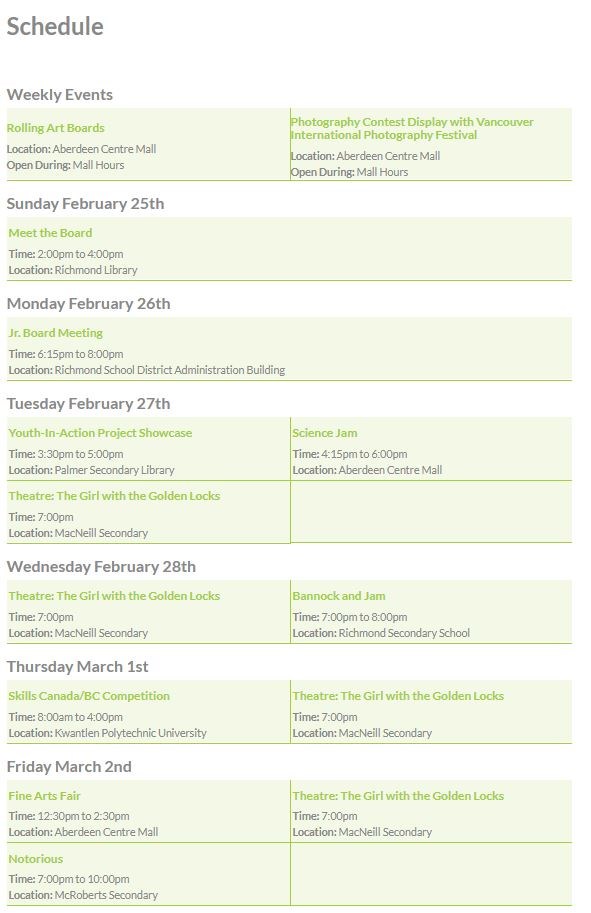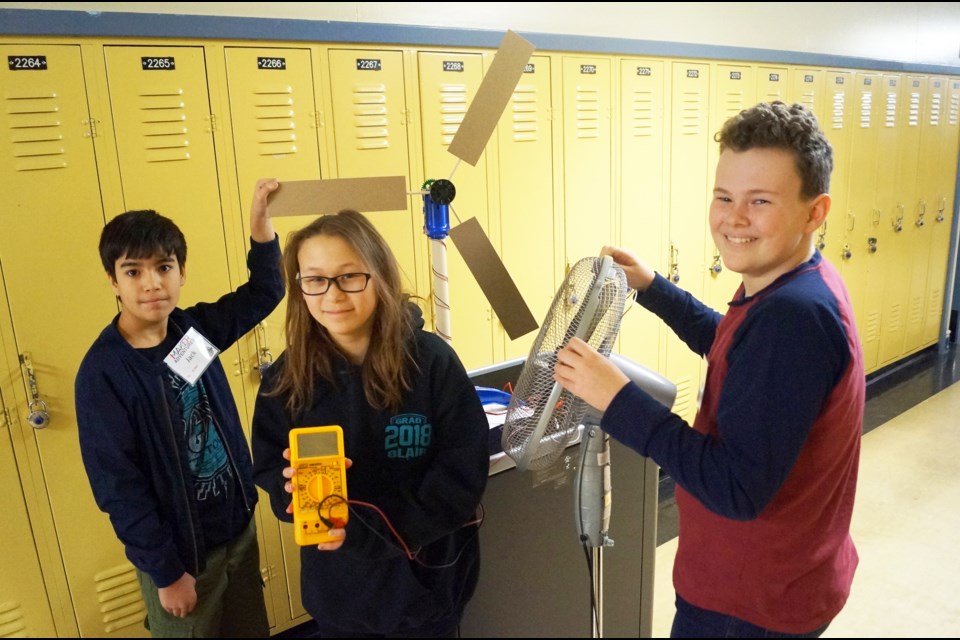On account of nearby migratory birds and Vancouver International Airport, it’s unlikely Richmond residents will ever see large scale wind turbines operating off the city’s shoreline.
But further afield, such an energy source may very well burn our bulbs and charge our vehicles. Or perhaps all our homes will have small windmills to capture the gusty Salish Sea.
Helping us get to more sustainable energy solutions, such as wind, will now be up to the next generation, such as Grade 6 and 7 students from the Richmond School District.
And a glimpse of this future may just be evident at Science Jam next week (Tuesday, Feb. 27 from 4 to 6 p.m.) at Aberdeen Centre. The event is part of Education Week at the district.
Click here for Education Week information - See schedule below
While nine teams of three students will be competing against one another to build the most energy-efficient wind turbine for the regional Skills Canada competition March 1 at Kwantlen Polytechnic University Richmond campus, their projects will be on display at Science Jam two days in advance.
Dubbed the inaugural Maker Adventures program, science and environmental sustainability teacher consultant Neal Campbell has paired up with Hugh Boyd science teacher Doug Park to take a handful of the district’s most ambitious youngsters and turn them into energetic problem solvers.
“The purpose is to make changes in the future,” said Campbell.
The students will be handed various materials, such as cardboard pieces, to build their own windmills. Essentially, they’ll be designing the wind blades on a small turbine to determine how to create the most energy. The better their windmill turns from a small fan, the more voltage will be created.
Winners will go on to the provincial Skills Canada championship at Abbotsford Tradex.
Along the way, the students will be documenting their projects, including research and testing, with digital tools, such as video and social media.
“So they do hands-on maker space builds of the designs they have researched. And then they’re documenting all those steps in the digital realm because one of the big things is allowing the kids to express their knowledge in digital forms,” said Park.
Campbell said next year, students may be tasked to make other projects tied to sustainability.
“We have a strong environmental stewardship policy,” said Campbell.
“On the education side, we’re looking at embedding it into our curriculum, with knowledge and the opportunities to learn about environmentally sustainable practices...to make changes in their lives and live more sustainably.”
But what is sustainable? It’s a daunting question, particularly in Beautiful B.C., where people are divided on whether a new oil pipeline should be built from Alberta and whether LNG should be tapped and exported to replace China’s dependence on dirty coal.
“Is that a legitimate bridge fuel?” asked Campbell. “Part of what we need to do with kids is equip them with the tools to be critical thinkers.”
According to the district, more than 600 students from 13 Richmond schools will display their science projects at Science Jam. The public is encouraged to take part in this event by engaging students about their projects.




